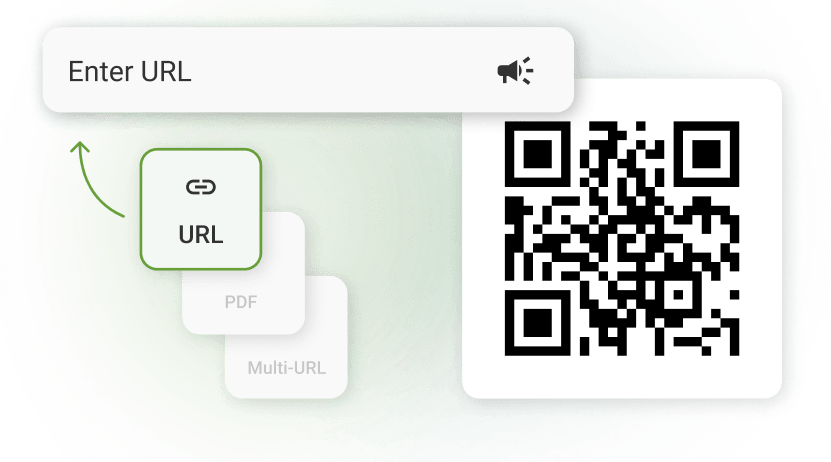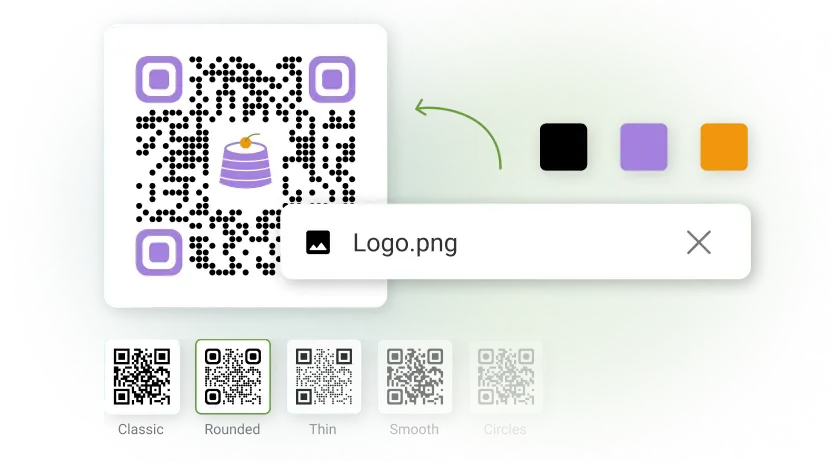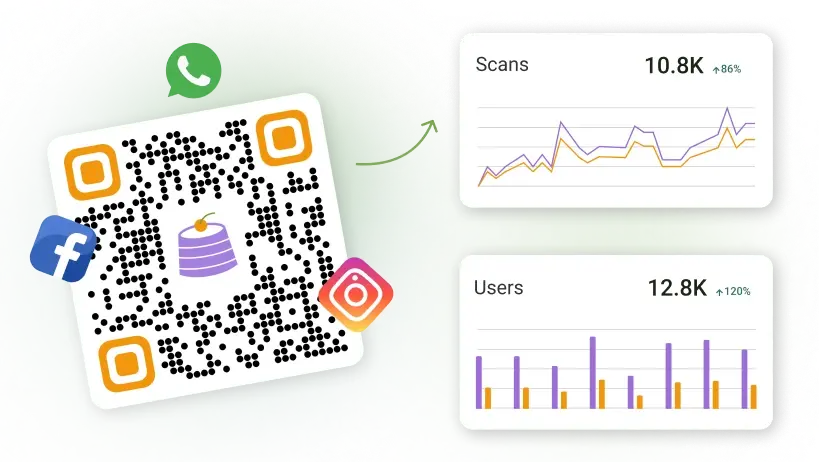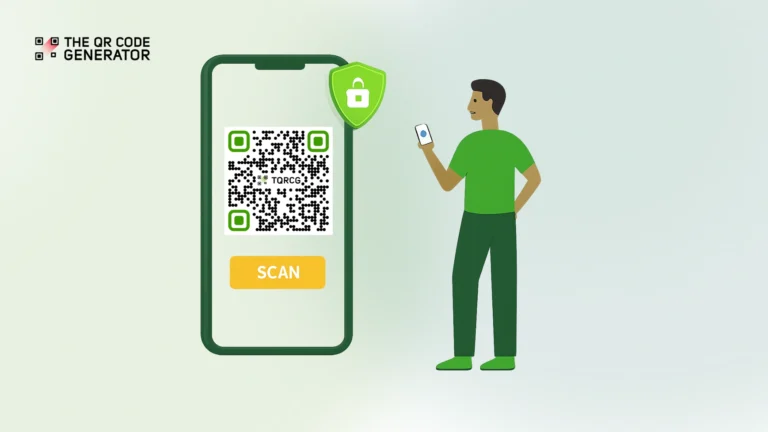9 in 10 customers are engaging with QR Codes at least on a weekly basis, making it a near permanent fixture of daily life. In the U.S. alone, more than 99.5 million smartphone users are expected to use QR Codes by the end of 2025.
But with that kind of explosive adoption comes new risks. Cybercriminals are exploiting the trend through QR Code-based scams, now called “quishing” (QR Code phishing).
So, how can you tell if the QR Code in front of you is safe?
The reality is that QR Codes themselves aren’t dangerous, but how they’re created and managed determines whether they’re secure. This guide will show you what makes a QR Code safe and the simple checks you can use before scanning.
Table of contents
- Why do people worry about QR Code safety?
- How to tell if a QR Code is secure
- A 5-step checklist to verify a QR Code before scanning
- When are QR Codes safer than alternatives?
- Scan with confidence with The QR Code Generator (TQRCG)
- Frequently asked questions
Why do people worry about QR Code safety?
Quishing has risen from 0.8% in 2021 to 10.8% in 2024, so it isn’t surprising that people worry about scanning QR Codes.
Many people express anxiety about accidentally entering passwords or banking details on fake sites, or fear that scanning alone might trigger automatic malware installations on their devices.
These concerns often stem from a fundamental misunderstanding about how QR Codes actually work and where the real vulnerabilities lie.
The reality is that scanning a QR Code cannot hack your device or install malware by itself.
The QR Code is simply data your phone reads and displays, much like reading text on a business card. The actual risk occurs only in what you choose to do after scanning, such as clicking through to malicious websites, downloading suspicious files, or entering sensitive information on unverified pages.
Modern smartphones show you a preview of the destination before opening anything, giving you complete control over whether to proceed, making the scanning process inherently safe.
Common threats tied to unsafe QR Codes:
- Malicious URLs: Embedded QR Codes that redirect to phishing or fake login pages.
- Fake stickers: Counterfeit QR Code stickers pasted over legitimate labels or posters, often seen in public places.
- Impersonation and tampering: QR Codes shared on emails or physical materials impersonating trusted brands, payment processors, or HR departments.
- Credential theft: 89.3% of quishing attacks are aimed at stealing login information and sensitive data.
- Limited user awareness: Only 36% of QR Code phishing incidents are accurately detected and reported, and a huge chunk goes unnoticed until damage is done.
- Rising multi-channel use: Quishing attacks are becoming increasingly multi-channel, using PDFs, JPEGs, emails, etc.
While these risks may sound alarming, you can protect yourself by learning to spot the warning signs.
How to tell if a QR Code is secure
There are multiple ways to validate your QR Code’s security. Let us look at some technical and trust signals you can look out for.
Technical properties for security
These technical measures ensure that QR Codes are safe to scan and protect your personal data from malicious attacks.
1. HTTPS-only destinations: Always check that your QR Code points to HTTPS pages and does not redirect you to different pages.
2. Minimal data collection: Legitimate QR Code landing pages only ask for essential information and use encrypted forms, so your personal data stays protected and compliant with laws such as the General Data Protection Regulation (GDPR) and the California Consumer Privacy Act (CCPA).
3. Tamper-evident stickers for physical codes: When you see holographic or custom-branded stickers with serial numbers on printed QR Codes, you know they’re genuine. These stickers make it incredibly hard for attackers to swap in a fake code.

Trust signals for security
In addition to technical safeguards, visual and branding cues help you verify that a QR Code is genuine and comes from a trusted source.
1. Branded QR Code design and domain: Look for QR Codes featuring the company logo or a custom call-to-action, along with a short branded domain (e.g., qr.brand.com). This signals who owns the QR Code and reinforces brand trust.
Trusted QR Code generators like The QR Code Generator (TQRCG) offer both customization and branded link shortening to enhance recognition.

2. Transparent preview links: Check that the QR Code shows a visible, branded URL preview instead of using generic shorteners. This lets you verify the destination before scanning, protecting against malicious redirects.
3. Official labels and context: Genuine QR Codes often include clear labels or trust badges, like “Official Menu” or “Event Check-In.” These contextual cues help users quickly assess authenticity and purpose at a glance.
A 5-step checklist to verify a QR Code before scanning
When you see a QR Code in any context, follow these foolproof steps to verify before you scan.
1. Check the placement

73% of Americans scan QR Codes without verification. Don’t be one of them.
Check where the QR Code is displayed. Codes on official packaging, company websites, or presented by staff members are more likely to be legitimate. Avoid scanning codes on random surfaces, unsolicited flyers, or stickers placed over another QR Code.
2. Check branding and instructions
Authentic QR Codes often feature clear branding elements, such as a logo or custom call-to-action (e.g., “Scan for today’s menu”).
3. Preview the destination URL
Use your device’s built-in preview or a reputable QR Code scanning app to view the full URL before opening it. Watch for slight misspellings or additional words that could indicate a fraudulent site. You’ll often notice that the page does not look legitimate or official.
4. Confirm HTTPS and domain accuracy

A secure QR Code destination begins with “https://” and displays a lock icon in the preview. Ensure the domain exactly matches the organization’s known website.
5. Protect sensitive information
Even after verifying the URL, avoid entering personal credentials or payment details unless you are sure of the page’s authenticity. If a login prompt appears unexpectedly, navigate directly to the company’s official website to complete any required actions.
Keeping these safeguards in mind will always protect you from scams.
Interestingly, QR Codes can occasionally offer more security than regular links; let’s see why.
When are QR Codes safer than alternatives?
Compared to alternatives such as URLs and physical handling of cards, sometimes QR Codes are more secure. Let’s see how:
1. Payments and authentication
QR Code payments now account for 25% of all mobile payment transactions globally. In countries with strict payment regulations such as India and China, QR Codes often provide more security than presenting a payment card in public, thanks to encrypted, one-time-use links. This secure approach is now gaining popularity in the USA as well.”
2. Contactless sharing
QR Codes enable contactless information sharing, whether it’s through restaurant menus or digital business cards. They also reduce the risk of data leaks from handing over physical documents, since QR Codes can be encrypted to protect sensitive information.
3. Verified product and brand authentication
CPG brands are increasingly using QR Codes on packaging for traceability and authenticity. Brands such as Popmart use QR Codes to signify the authenticity of their products like Labubus. This shows that QR Codes can offer enhanced security and convenience across multiple use cases, making them a trusted choice.
Scan with confidence with The QR Code Generator (TQRCG)
QR Codes have become an integral part of daily life, but like any technology, their safety depends on how they’re created, managed, and used.
By understanding the risks, verifying the source, and following simple scanning best practices, you can enjoy the convenience of QR Codes without compromising security. As we saw, sometimes it can make interactions safer.
To experience secure and reliable scanning firsthand, try The QR Code Generator’s free QR Code scanner. It works directly in your browser and ensures your privacy while giving you an instant preview of the content before you proceed. Scanning your QR Codes here can help you verify their safety every time.
For businesses and consumers who want security with every scan, using a trusted QR Code generator is key. The QR Code Generator (TQRCG) ensures your codes are secure, customizable, and easy to track. It can help you avoid malicious links while maximizing engagement.
Create your safe and free QR Code today!
Frequently asked questions
No, scanning a QR Code cannot directly install a virus on your phone. The risk comes from what happens after the scan, such as if the code redirects you to a malicious website or tricks you into downloading harmful files.
In most cases, yes. QR Code menus at restaurants are safe if they lead to HTTPS websites, display official branding, and match the restaurant’s identity. Always check that the URL looks legitimate (e.g., the restaurant’s actual domain). If the QR Code takes you to an unrelated or suspicious site, avoid entering any personal details.
If you have already scanned a QR Code and it seems suspicious, do not click or download anything from the page. Next, close the browser tab immediately and clear your browser history and cache. You can also run a quick antivirus or malware scan on your phone as an additional security check.
Before scanning, ensure the QR Code is from a trusted business and carries the company’s logo. Many smartphone cameras show the URL before opening. Always confirm the domain looks right before tapping.
Some red flags for malicious QR Codes are misspelled domains, suspicious redirects that jump between multiple sites, forced file downloads (e.g., .apk or .exe files), or requests for login details and payment on unfamiliar pages. If you notice any of these, back out immediately.
It’s optional. Most smartphones already have safe, built-in QR Code scanners in their camera apps. However, security-focused QR Code scanner apps can add extra layers of protection, like real-time URL checking or automatic phishing detection. They’re useful if you scan QR Codes often in public places or for work.







